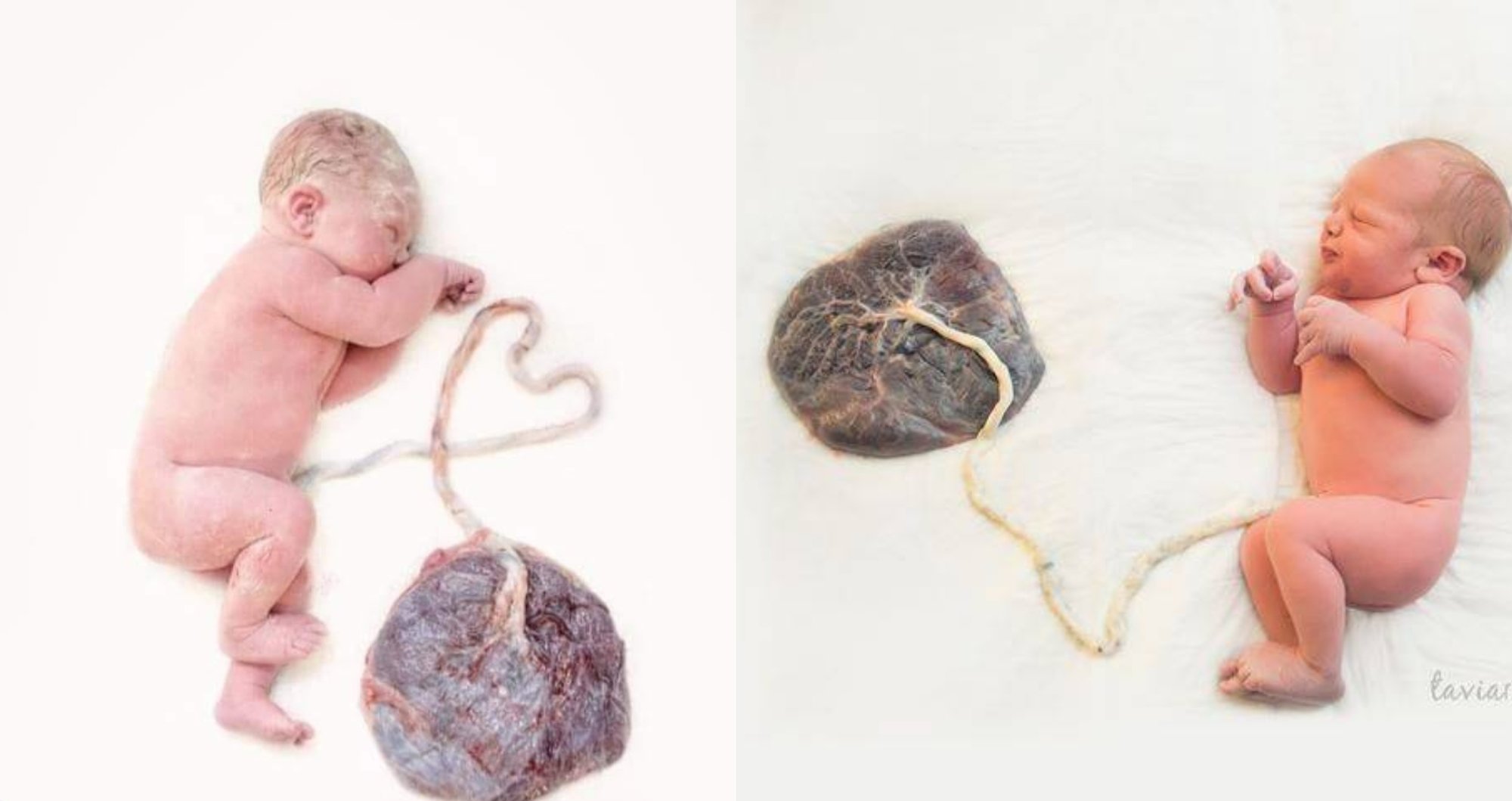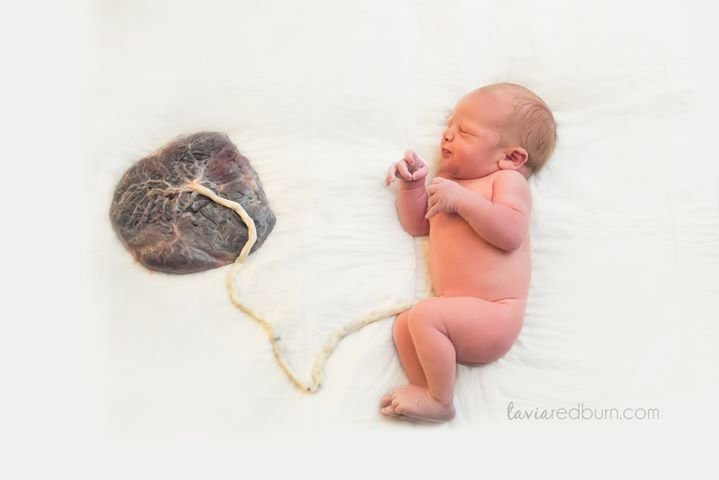
Even before most expectant parents welcome a newborn, they'll feel pressured to ensure their postpartum life looks a certain way. That's because no matter how real some celebs have kept it on social media, society expects new parents to "bounce back" to their pre-baby bodies in an instant. Now, a powerful image taken by birth and newborn photographer Tavia Redburn is serving to inspire anyone who has just given birth to take a breath and embrace a period of healing.
Alongside a repost of the image on Facebook, a New Zealand mom named Alice Nikita wrote powerful observations about its symbolism.
"If you've never seen a placenta, this beautiful image shows the size of it perfectly," Nikita shared. "After birth, the placenta detaches from the uterus leaving a wound the size of a plate. Now imagine you had a wound that large on the outside of your body. You would be told by everyone to rest, look after yourself and take time to heal. So why is it expected that new mothers should 'bounce back' so quickly after childbirth? When this is just one thing that needs healing; not to mention all the other physical, emotional and psychological changes we need to adjust to."
She went on to address new moms: "It's ok to stay in bed with your baby. It's ok to ask others for help. It's ok to prioritize yourself and your baby. Get your family involved, ask your friends for some help, get a postnatal doula. Don't rush your post-birth recovery, be easy on yourself. No better time to do so than just after you've given birth."
Nikita tells CafeMom that Redburn's photo spoke to her, as she just welcomed a baby boy named Ezra last month.
"When I saw the picture, it brought up a lot for me," she notes. She felt pressure from friends and her ex to heal rapidly after giving birth. But given various complications, it's been a slog to recover, and she has had to rely on her current partner's help more than she anticipated.
Redburn meant to empower new parents with the powerful image, which is similar to another she took six years ago.

The Oklahoma-based photographer tells CafeMom, "I photographed an image similar to this for the first time in 2014, because I wanted to show moms the power of their bodies. Not only did they grow a human, they grew an entire organ to feed that baby and maintain its life."
Redburn says that because the cord is usually cut so quickly, "it's rare we get to see the baby and placenta like this outside of the womb.This is how baby grew inside, and it's magical to see on the outside."
That said, she says she "100% agrees" with Nikita's message of "honoring the fourth trimester."
"Instead of rushing to bounce back, honor that small window of time to care for yourself and get to know your new baby," Redburn advises.
Oklahoma City-based mom Tara, who gave birth to the baby in the image in 2018, also couldn't agree more with that important sentiment.
"This picture shows the miracle my body made," she tells CafeMom. "The nourishment my body fed her and the connection we had together."
Tara, who welcomed her first child at home and her second in the hospital, knew she wanted Redburn to capture the beauty of her baby — and her placenta.
"I remember looking at different birth photos and always coming back to the one where the baby is still attached to the placenta," she shares. "I recall telling Tavia, 'This is the picture that I want. I don’t care about any other picture except for this ONE picture.'"
She even told her doctor not to cut the cord, to make sure that Redburn could get the photo. "My OB thought I was crazy," the mom of two recalls. But it was worth it in the end, because Redburn got the shot, and Tara feels like she's able to relive her birth experience by looking back at the image.
Here's hoping Redburn's photography only serves to remind new parents everywhere what their bodies are capable of.
And to remind them of the kindness they owe themselves in the weeks, months, and even years that follow giving birth.




